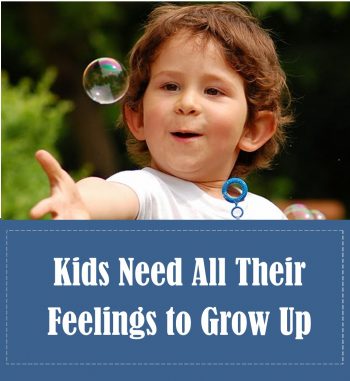
I came across an article written by a Catholic author who argued, in essence, that we must avoid anger lest we find ourselves in the clutches of Satan. I’m not linking to the article, because I don’t want to start a “thing” with somebody who deserves respect. However, I do want to counter this common misconception about anger specifically and the emotions generally.
(Note: I’m using the terms “feelings” and “emotions” interchangeably here, but social scientists usually refer to the unconscious physiological stirrings we experience as “emotions” while our conscious recognition of and reflection upon the emotions as “feelings.” Not everyone notices emotional stirrings, so they remain latent. In this distinction, all mammals have emotions, but only humans have feelings.)
According to the Catechism, emotions are morally neutral; it’s how we respond to them that makes them good or bad: “In themselves passions are neither good nor evil. They are morally qualified only to the extent that they effectively engage the reason and will” (CCC 1767).
In fact, the Catechism also says that our emotions or feelings are essential to our moral life, and they will lead us to greater virtue as long as they are ordered and balanced. You might think this refers only to “positive” emotions like love or joy. But anger, sadness, or other “negative” emotions are also critical to our flourishing. That our Lord experienced anger, sadness, frustration, and the like is proof of their worthiness. Without all our emotions online, we are but a shell, living in a colorless and flat world.
Even intense emotion can be a sign of virtue when well-ordered and inclined to the good (CCC 1768). This is challenging, no doubt. For most of us, intense emotion derails us and leads us not to virtue but to venting, blaming, or defensiveness. A sign of integration and maturity is an ability to use our will with the aid of our passions to move us toward right action.
RAGE is a sign of dis-integration. I think this is the emotion the author was contemplating when he wrote his article. People with rage issues often avoid feeling angry at all because they believe it’s bad. In fact, rage is often a cover for basic, everyday frustration that has been simmering for too long. When I realized that I frequently confused my frustration with anger, I was able to navigate it better. Frustration is such a basic human emotion, but when we try to pretend like we are never frustrated, in the end we feel angry. And, maybe, eventually rage-filled. That’s when we land up, indeed, in Satan’s clutches.
God created us with emotions, so they have some purpose in our final end, which is beatitude. Human emotions are like Plato’s steeds: sometimes they take us on a wild ride, but they also carry us toward our divine destination.
How Do the Emotions Become Well-Ordered?
Every parent knows what disordered emotions look like! Small children always have dis-integrated emotions, and even older children can have trouble managing their emotions because the prefrontal cortex is still developing.
When many of us see crazy emotional outbursts in our kids, we think we should get rid of them. “Cut it out.” “Don’t do that.” “Stop it.” We do this for many reasons. The eruptions annoy us. We’re worried our kids will grow up to be bank robbers. We feel a little defensive when the strong emotion is directed at us. (“I can’t help that I had to travel. What do you expect me to do?”)
The problem here is that we can’t cut emotions out. We can shut them down, but when we do, the emotions will still come out, one way or another. Sometimes they shoot out sideways in aggression or self-harm. Sometimes they are displaced onto a pet or younger sibling.
The answer to anger, frustration, etc. is not to eliminate them, but to find another emotion to temper them. We find our mixed feelings. When I’m annoyed at my husband during a discussion, I temper my annoyance with respect, because I love him. When I am afraid of public speaking, I temper my fear with my desire to continue my ministry. I find courage not by eliminating my fear, but by finding an emotion to balance the fear. Virtue is not the absence of emotion; it is the tempering of emotion.
And this is why young children struggle. Because they don’t have mixed feelings. Adults can experience two emotions at once, but young children (under 5) can’t. They experience only one emotion at a time. The prefrontal cortex is the “mixing bowl” of emotions, so our kids can’t temper their emotions until the prefrontal cortex is ready.
While our ultimate goal is to raise a child who expresses his emotions in healthy and socially acceptable ways, arriving there is a long process. You can’t order your child to be mature. He might act mature (nice, calm, compliant) without ever possessing true emotional and moral maturity. Many grown-ups behave themselves at work, then go home and take out their frustrations on their families.
As messy and inconvenient as it is, we have to let our kids grow up with all their feelings on board. Until they are five to seven years old, they lack the ability to reflect rationally on their emotions; they lack mixed emotions. So, we have to help them. They aren’t “bad” because they lack the capacity for cognitive reflection.
Just as we don’t punish a baby for wetting his diaper, we don’t punish a two-year-old for having a temper tantrum. We come alongside him through the tantrum, and we mentor him little by little in healthy expression. We have to take responsibility for our children’s emotions until they are mature enough to express themselves in a way that protects their relationships.
How to Come Alongside Your Child’s Feelings

Accompanying our children through their emotions is a central and indispensable task of parenting them.When we come alongside our children, we are shepherding them toward maturity. Here are some basics tips* for how you do this shepherding:
- Accept the existence of the feelings even if they seem irrational to you. Don’t try to talk your child out of the feelings. Just observe what you see. “You seem frustrated with me.” Note: we can accept the existence of the feeling without accepting violence or cruelty. For example, we can recognize and support a child’s frustration without condoning him kicking the dog. “I can see how frustrated you are, but I can’t let you kick Shaggy.”
- Normalize your child’s feelings. Your child internalizes your reaction to his feelings. If you act like sadness, fear, or frustration are problems that need to be shoved away in a dark closet, your child will too. Treat emotions like a normal part of everyday life. “Everybody feels frustrated sometimes. Let me help you through it.” “I feel sad, too, when my friend doesn’t invite me to a party.”
- Make room for feelings that threaten you. Parents have the hardest time accepting feelings in their kids that they don’t accept in themselves. If you know you have a hard time allowing yourself to be angry or sad, be intentional in giving your child space to have those feelings with you.
After the emotions have settled, you can do some virtue training. You can talk about what kindness and patience look like. You can read books about the virtues; you can talk about the virtuous actions of characters in movies. In this way, you are making room for the feelings while gradually helping your child integrate the feelings with his will so that his actions are ordered beautifully toward his own good and the good of others.
*These tips are adapted from Gordon Neufeld’s course “Heart Matters”
Setting Boundaries
Healthy emotional expression isn’t about allowing our kids to release like a volcano. Yes, the release is important, but part of prudent parenting is coaching our kids in alternatives to destructive, cruel emotional expression. When our kids are calm, we can give them strategies and concrete ideas for dealing with powerful feelings.
What do you see your child doing when he’s overwhelmed with emotion? Find similar but safe outlets for him. Instead of kicking the dog, a child could kick a ball around the yard. Instead of screaming at a sibling, a child could play cacophonous music (if you can handle it!). Maybe you have a ripper who can tear up old magazines when frustrated. That sort of thing. They don’t catch on overnight, but over time they will begin to use these strategies.
Creating Emotional Playgrounds
When we think of “expressing” emotions in a healthy way, most of us think about talking. We encourage our children to talk about how they are feeling. This is a beautiful intuition, and indeed language helps to bring emotions to consciousness. Some children lack words to match their emotional stirrings, so we can name the feelings for them. Preschoolers, in particular, benefit from games and books that help them learn the names of feelings. This emotions flip chart was a big hit with my youngest.
However, some kids have a hard time talking about their feelings. Sometimes they want to be alone or they don’t know what’s wrong, but they still need a safe place to release emotions. Fortunately, play is one of the best avenues for safe emotional expression.
Our homes can provide plenty of invitations for play and expression: dress-up baskets, art supplies, journals, music, gardens. Some kids find some relief in jumping and throwing, so we can install a trampoline or basketball hoop if feasible. (A mattress on the floor for jumping or a garbage can for hoops will do in a pinch.)
The bottom line: No feelings are bad, but expression can turn foul when we deny our feelings. Our children need all their feelings to grow up emotionally and spiritually.
Resources
Discipleship Parenting: Planting the Seeds of Faith, ch. 4 (Merciful Discipline) and ch. 5 (Empathy), by Kim Cameron-Smith
The Emotionally Healthy Child by Maureen Healy. Great tips for finding alternatives to acting out or shutting down.

